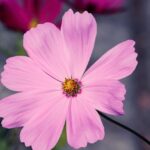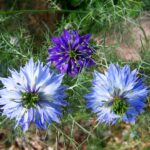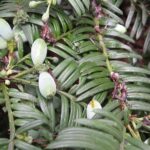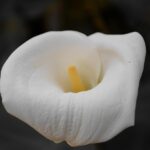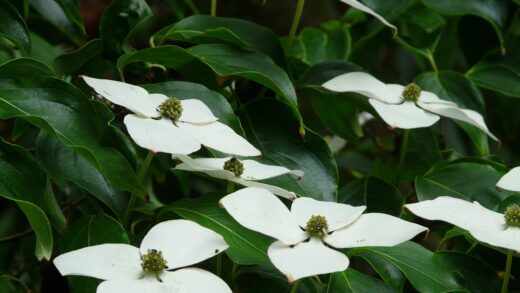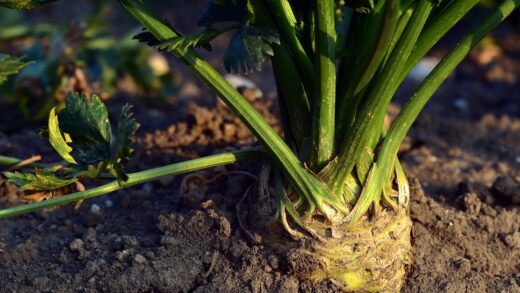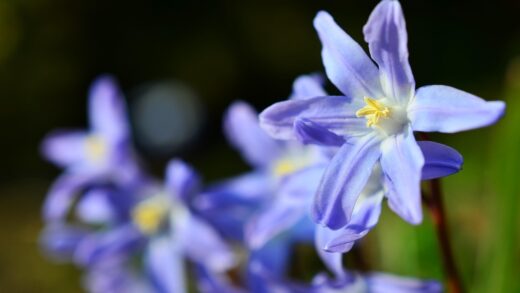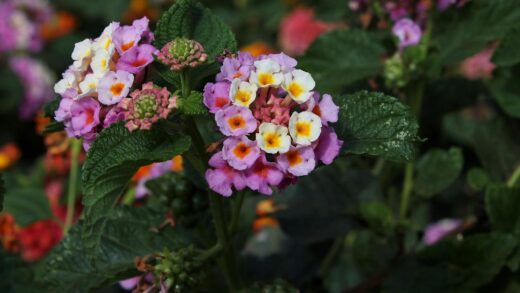Embarking on the journey of planting and propagating the Balkan bellflower is a rewarding endeavor that allows gardeners to easily multiply this delightful and resilient groundcover. The initial planting process is straightforward, laying the groundwork for a plant that will provide years of beauty with minimal fuss. Success hinges on selecting an appropriate site that meets the plant’s fundamental needs for sunlight and, most importantly, excellent drainage. Proper soil preparation before planting is a critical step that cannot be overstated, as it directly impacts the plant’s ability to establish a healthy root system. By understanding the optimal timing and techniques for planting, you set the stage for a vigorous specimen that will quickly spread to form a lush carpet of green foliage and a profusion of star-like purple-blue flowers.
The process begins with careful site selection and preparation, which is arguably the most crucial phase for long-term success. This species thrives in locations that receive full sun to partial shade. In cooler climates, more sun is generally better, promoting dense growth and prolific flowering. However, in hotter regions, afternoon shade is beneficial to prevent stress and leaf scorch. The soil must be exceptionally well-draining. If you are working with heavy clay, amending the soil with copious amounts of compost, grit, or coarse sand is not just a suggestion but a necessity to prevent the fatal issue of root rot.
When it comes to the actual act of planting, timing is an important consideration. The ideal times to plant Balkan bellflower are in the spring, after the danger of frost has passed, or in the early autumn. Planting in the spring gives the plant the entire growing season to establish a robust root system before the onset of winter. Autumn planting is also effective, as the warm soil temperatures encourage root growth, allowing the plant to settle in before the ground freezes. When planting nursery-grown specimens, ensure the hole is dug to be roughly twice the width of the root ball and just as deep, allowing the roots ample room to spread out into the loosened soil.
After placing the plant in the hole, the top of the root ball should be level with the surrounding soil surface. Planting too deep can lead to crown rot, while planting too high can cause the roots to dry out. Backfill the hole with the amended soil, gently firming it around the root ball to eliminate any large air pockets. A thorough watering immediately after planting is essential to settle the soil and provide much-needed hydration to the roots, helping to mitigate transplant shock. This initial watering is a critical step in ensuring the plant begins its life in its new location on the right foot.
Propagation by division
Division is one of the most reliable and straightforward methods for propagating the Balkan bellflower, offering a way to both multiply your stock and rejuvenate older, overgrown clumps. This technique involves carefully lifting an established plant from the ground and separating it into smaller, viable sections, each with its own set of roots and shoots. The best time to undertake this process is either in the early spring, just as new growth is emerging, or in the early autumn, about four to six weeks before the first expected frost. These periods provide moderate temperatures and sufficient time for the new divisions to establish themselves before the stresses of summer heat or winter cold arrive.
More articles on this topic
To begin, use a spade or garden fork to carefully dig around the perimeter of the plant clump, giving it a wide berth to avoid damaging the root system. Once the soil is loosened, gently lift the entire clump out of the ground. After lifting the plant, you can shake or gently wash off the excess soil to get a clearer view of the root structure and the natural division points. An older, more congested clump may have a woody center; it is often best to discard this less vigorous central portion and focus on propagating the healthier, more vibrant outer sections of the plant.
The actual separation can often be done by hand, by gently teasing and pulling the root ball apart into smaller sections. For more densely packed or tough clumps, a sharp, sterilized knife or a spade may be necessary to make clean cuts through the crown and roots. Each new division should have a healthy portion of both roots and top growth (or at least several growth buds) to ensure its survival and successful establishment. Aim for divisions that are at least a few inches across, as larger sections tend to establish more quickly and will flower sooner than very small pieces.
Once you have your new divisions, they should be replanted immediately to prevent the delicate roots from drying out. Plant them at the same depth they were originally growing, in a well-prepared bed with good drainage. Water them in thoroughly after planting to settle the soil and provide essential moisture. It is normal for the newly divided plants to show some signs of stress or wilting initially, but with consistent moisture, they will quickly recover and begin to produce new growth, rewarding you with multiple healthy plants from a single parent clump.
Propagation from cuttings
Propagating the Balkan bellflower from cuttings is another highly effective method that allows you to create numerous new plants from a single parent specimen. This technique is best performed in late spring or early summer when the plant is in a state of active growth, providing plenty of healthy, vigorous stems to work with. The ideal cuttings are basal cuttings, which are young shoots taken from the very base of the plant, sometimes with a small piece of the root or crown attached. These types of cuttings tend to root more readily than those taken from the softer, more flexible tips of the flowering stems.
More articles on this topic
To take a cutting, select a healthy, non-flowering shoot that is approximately three to four inches long. Using a sharp, clean knife or pair of secateurs, make a clean cut at the base of the shoot, right where it emerges from the crown of the plant. Once you have your cutting, carefully remove the leaves from the lower half of the stem. This step is important because it prevents the leaves from rotting when they come into contact with the rooting medium and reduces the amount of moisture the cutting loses through transpiration while it is developing new roots.
After preparing the cutting, you can dip the cut end into a rooting hormone powder. While this step is not strictly necessary for Balkan bellflower, which often roots quite easily, it can significantly increase the success rate and speed up the rooting process. Prepare a pot or tray filled with a sterile, well-draining rooting medium, such as a mix of perlite and compost or coarse sand and peat moss. Moisten the medium thoroughly before inserting the cuttings, which will make the process easier and prevent the rooting hormone from being wiped off.
Insert the lower half of the cutting into the prepared medium, ensuring that the remaining leaves are well above the surface. You can place several cuttings in the same pot, as long as their leaves are not touching, which helps maintain good air circulation. To create a humid environment that encourages rooting, you can cover the pot with a clear plastic bag or place it in a propagator. Position the cuttings in a warm, bright location that is out of direct sunlight. Keep the medium consistently moist, and within a few weeks, the cuttings should develop a healthy root system, at which point they can be potted on individually to grow further before being planted out in the garden.
Growing from seed
Growing Balkan bellflower from seed is a patient but ultimately rewarding process that can yield a large number of plants for a minimal initial investment. The seeds can be collected from existing plants after the flowers have faded and the seed pods have turned brown and dry, or they can be purchased from a reputable supplier. It is important to note that Balkan bellflower seeds require a period of cold stratification to break their dormancy and trigger germination. This process mimics the natural winter conditions that the seeds would experience in their native habitat, signaling to them that it is time to sprout when spring arrives.
You can achieve cold stratification in one of two ways. The most natural method is to sow the seeds directly into a prepared seedbed or pots in the autumn and leave them outdoors over the winter. The fluctuating temperatures and winter chill will naturally stratify the seeds, and they will germinate in the spring as the weather warms. Alternatively, for a more controlled approach, you can stratify the seeds indoors. Mix the seeds with a small amount of damp sand or vermiculite, place the mixture in a sealed plastic bag, and store it in the refrigerator for four to six weeks before sowing.
After the stratification period, the seeds are ready to be sown. Prepare a tray or pot with a fine, sterile seed-starting mix. Lightly moisten the mix before scattering the seeds thinly over the surface. Balkan bellflower seeds require light to germinate, so do not cover them with soil; instead, gently press them into the surface of the medium to ensure good contact. Cover the tray with a clear plastic dome or plastic wrap to maintain high humidity, which is crucial for successful germination.
Place the seed tray in a warm location with plenty of bright, indirect light. Germination can be erratic but typically occurs within two to four weeks. Once the seedlings have emerged and developed their first set of true leaves, you can remove the plastic cover to increase air circulation and prevent damping-off disease. When the seedlings are large enough to handle, carefully prick them out and transplant them into individual small pots to grow on. Keep them well-watered and gradually acclimate them to outdoor conditions over a week or two before planting them in their final positions in the garden after the last frost has passed.
Transplanting and spacing
Proper transplanting and spacing are crucial for the long-term health and aesthetic appeal of your Balkan bellflower patch. Whether you are planting nursery-bought specimens, rooted cuttings, or your own seedlings, giving them the right start in their new home is vital. Before transplanting, it is beneficial to harden off the young plants. This process involves gradually exposing them to outdoor conditions—sunlight, wind, and temperature fluctuations—over a period of 7 to 14 days. This acclimatization prevents transplant shock, a state of stress that can stunt growth or even kill a plant that is moved too abruptly from a protected environment to the open garden.
When you are ready to plant, prepare the garden bed as previously discussed, ensuring the soil is loose and well-draining. Dig a hole for each plant that is slightly wider and just as deep as the pot it is in. Gently remove the plant from its container, taking care not to damage the root ball. If the plant is root-bound, with roots circling tightly at the bottom of the pot, gently tease them apart with your fingers. This encourages the roots to grow outwards into the surrounding soil rather than continuing to circle, which can inhibit the plant’s establishment.
Place the plant in the hole, making sure the top of the root ball is flush with the ground level. Backfill with soil, firming it gently around the plant to remove air pockets. Spacing is a key consideration for this spreading groundcover. To achieve a dense, continuous carpet of foliage and flowers, space individual plants approximately 12 to 18 inches (30 to 45 cm) apart. This may seem sparse at first, but the Balkan bellflower is a vigorous grower and will quickly fill in the gaps, usually within one or two growing seasons.
After planting, water each plant thoroughly at its base. This initial soaking is critical as it helps to settle the soil around the roots and provides immediate hydration. For the first few weeks after transplanting, monitor the soil moisture carefully, providing consistent water to help the plants establish themselves. Proper spacing not only allows the plants to achieve their full spreading potential but also ensures good air circulation, which is essential for preventing the development of fungal diseases. This thoughtful approach to placement will result in a healthier, more visually impressive display.







